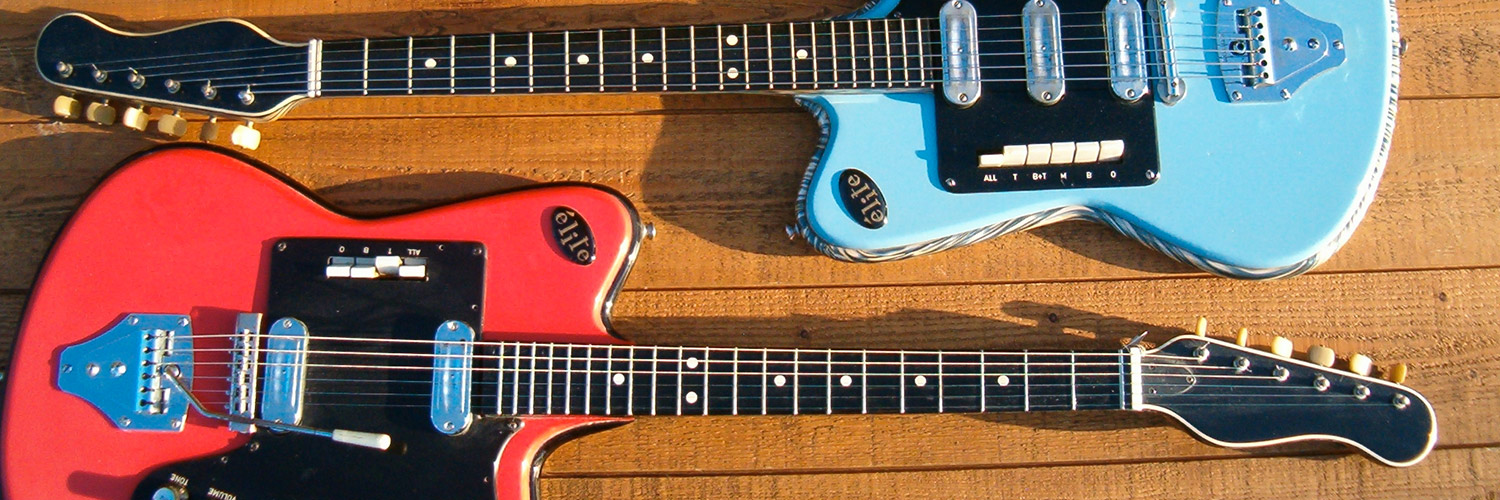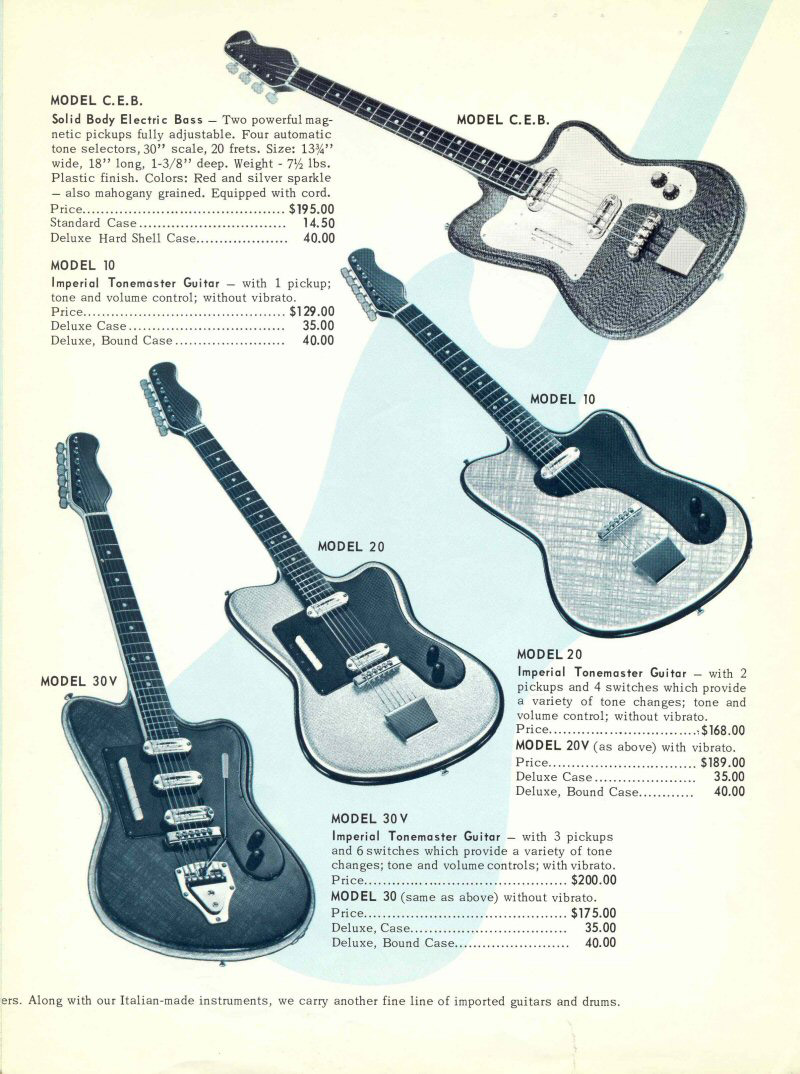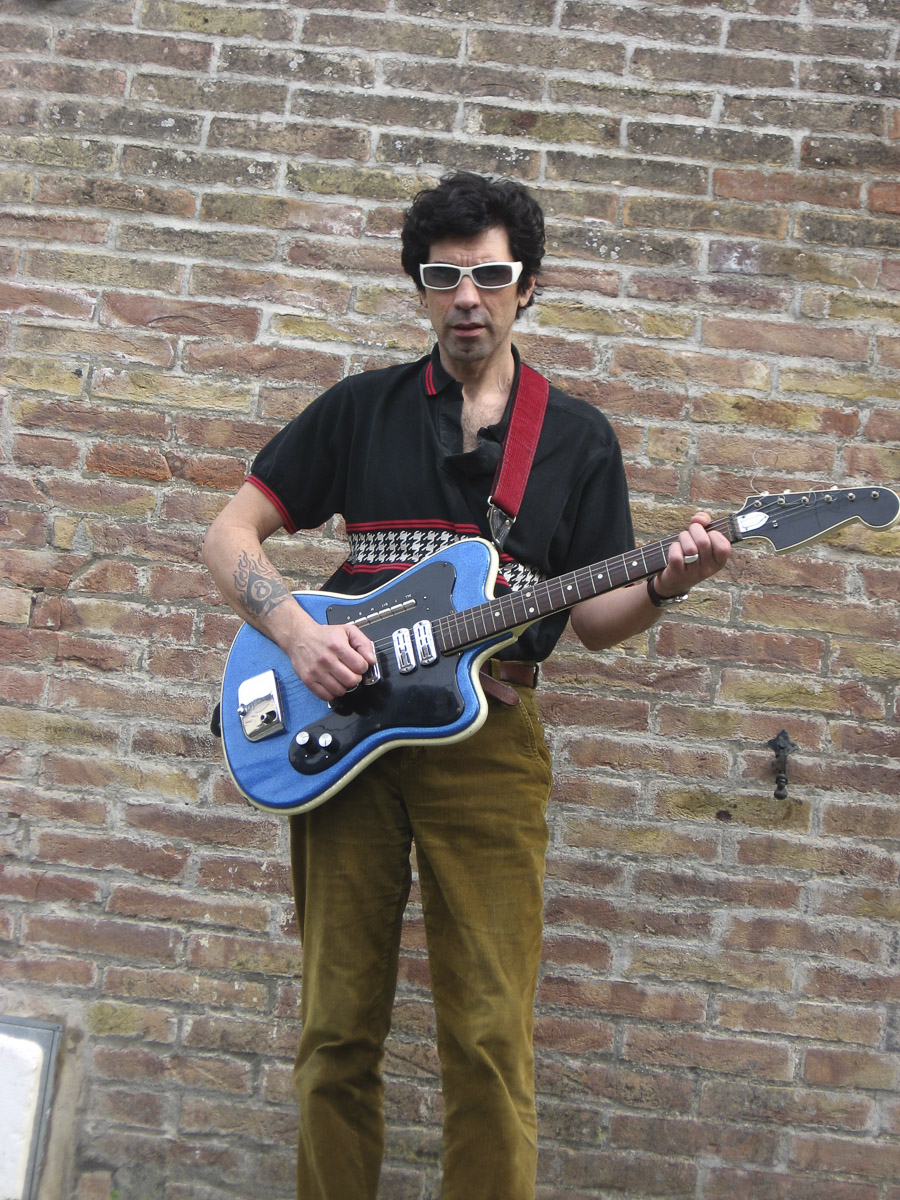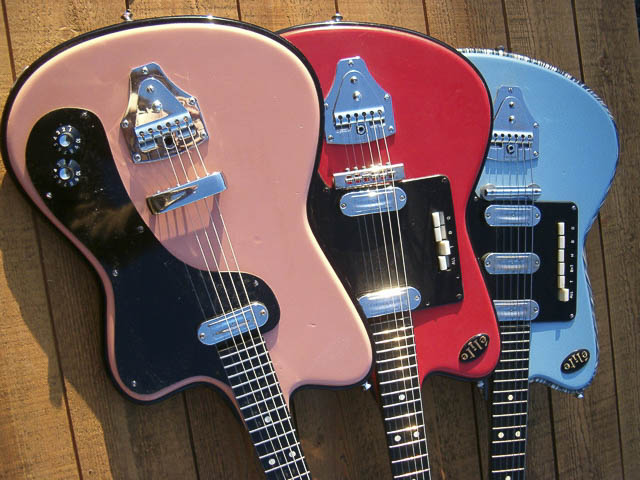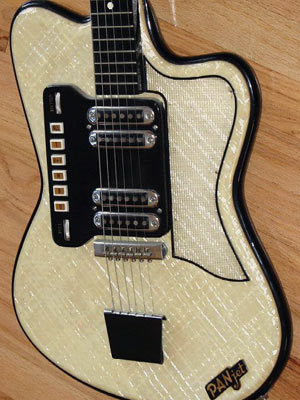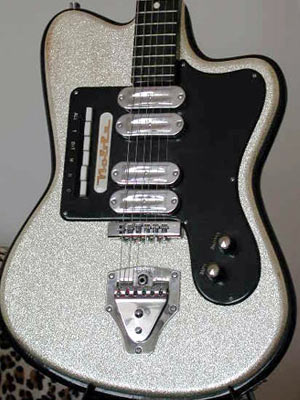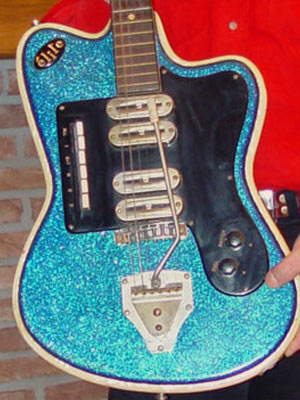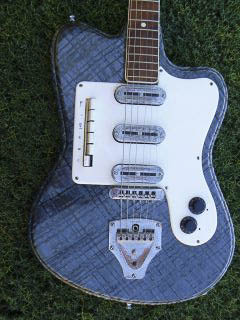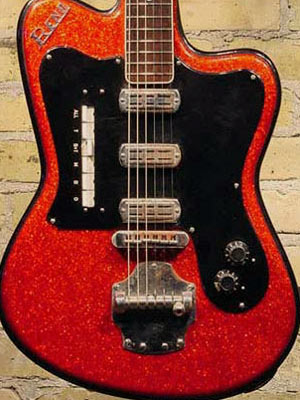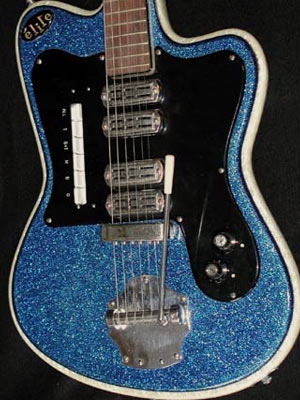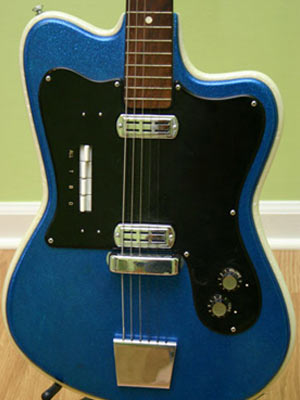CRUCIANELLI EARLY SOLID BODIES
Jack Marchal
This is probably the best Italian guitar of the early 60’s. It is a heavy weight instrument, with unbelievable sturdiness, and a beautiful one.
The general specifications and the various versions of this model closely duplicate the Eko 500, so it can be assumed the series was manufactured in the same years, e.g. 1962-1965. But there are on the oldest examples some specific features that let us suppose the initial inspiration was the Eko 400 (the so-called ‘Ekomaster’). Therefore it’s not unlikely that the series was introduced before the Eko 500, at the very end of 1961, or at least at the same time.
Scale : 630 mm (24.3/4″). Finishes : sparkle blue, red, silver, gold or textured perloid. Versions : 1, 2, 3 or 4 pickups, with or without vibrato. Just like the Eko 500. Same pickup combinations.
Crucianelli marketed these guitars worldwide under its own brandname Élite. In the US they were also made available through Imperial Tonemaster as well as under a bunch of obscure distributor brands such as Ardsley, Baron, Crestone, Philharmonic, Reno, Supreme, Sorrento, etc. In Canada, a Montreal-based distributor called them Italmelody.
Those so many brands for one model are all the more confusing that the model’s name has remained unknown (maybe there never was any). Therefore in our gallery we have opted for the simple naming scheme used by Imperial to define the versions: 40 = four pickups, 30 = three pickups, 20 = two pickups etc., with or without a ‘V’ suffix for vibrato.
Probabilmente la migliore chitarra italiana dei primi anni 60. È pesante e incredibilmente robusta oltre che bellissima. Le caratteristiche generali e l’evoluzione corrispondono esattamente a quelle della Eko 500. Si può dunque stimare che fu prodotta nello stesso periodo, tra il 1962 e il 1965 anche se le caratteristiche delle primissime versioni fanno pensare che furono ispirate dalla Eko 400, la cosidetta ‘Ekomaster’. Lasciandoci il dubbio che potrebbe essere stata introdotta prima della Eko 500, alla fine del 1961, o almeno simultaneamente.
Scala 630 mm. Colori: blu, rosso, argento o oro brillantinati, o perlato texturizzato. 1, 2, 3 o 4 pickups, con o senza vibrato — proprio come le Eko 500. Stesse combinazioni di pickups attraverso il selettore.
Crucianelli offriva queste chitarre in tutto il mondo con il proprio marchio Élite. Furono commercializzate negli Stati Uniti anche da Tonemaster e attraverso una moltitudine di oscuri distributori con marchi come Ardsley, Baron, Crestone, Philharmonic, Reno, Supreme, Sorrento, ecc. In Canada, un distributore di Montreal le chiamava Italmelody.
Tanti marchi per un solo modello sono sconcertanti almeno come il fatto che il nome del modello è rimasto ignoto (o forse non ce n’è mai stato uno). Di conseguenza, per la nostra galleria abbiamo scelto il semplice sistema di denominazione usato da Imperial per distinguire le versioni: 40 = 4 pickups, 30 = 3 pickups, 20 = 2 pickups, con o senza il suffisso ‘V’ per vibrato.

